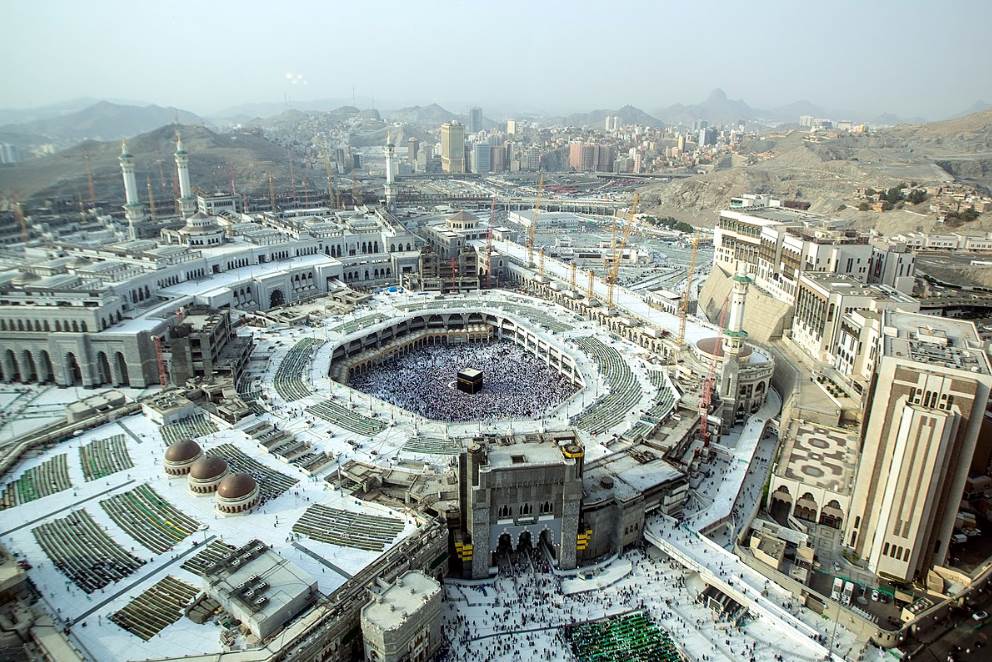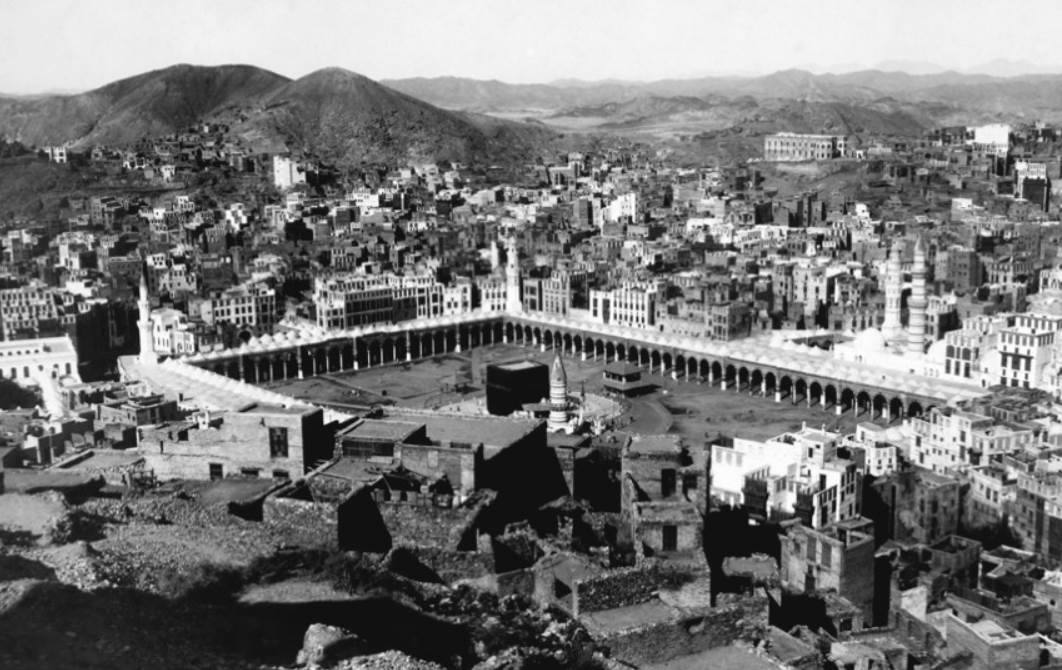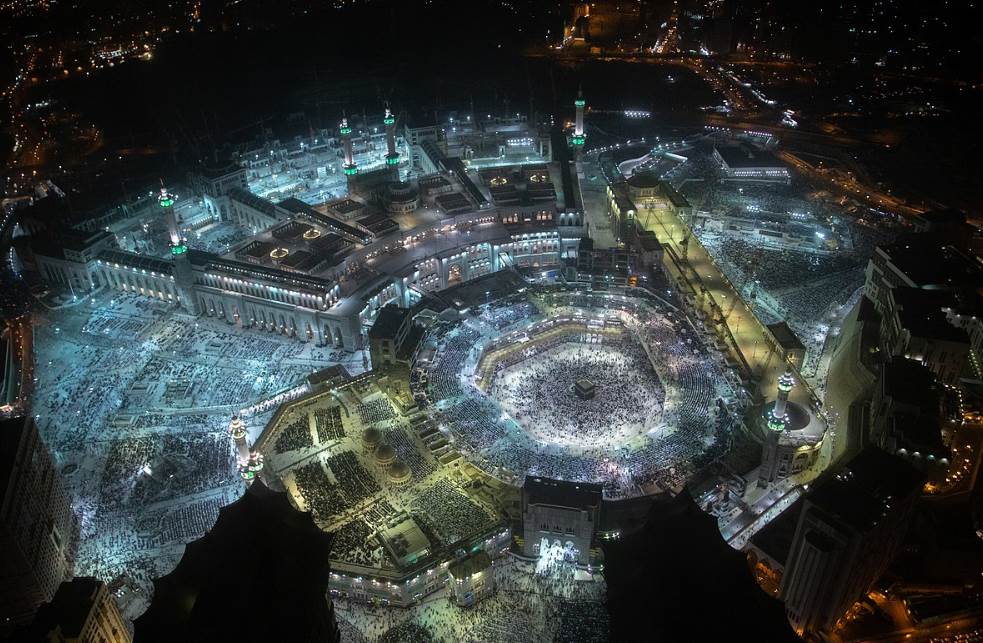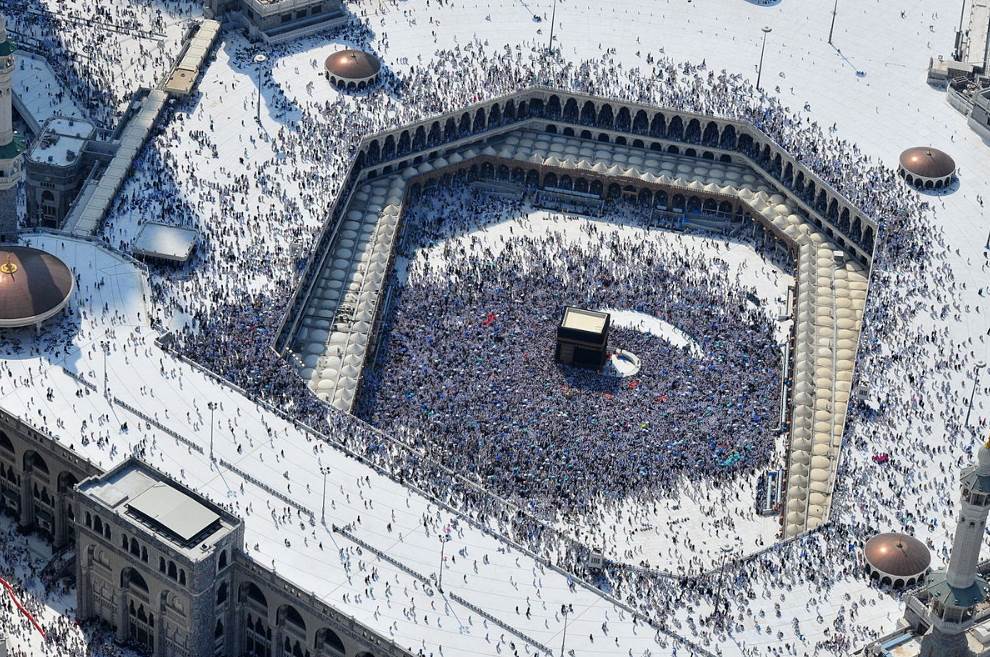One of the greatest Islamic buildings in the world is also the largest mosque and the most important one.
That’s not only because of its architectural highlights but also because it houses some of the most significant features of Islam.
Yes, this is the place where every Muslim must go once a year to circle a mysterious black building in the center of this Islamic structure.
In this article, you’ll discover some of the most interesting facts about the Great Mosque of Mecca, one of the ultimate highlights of Islamic architecture.
1. Masjid al-Haram is located in the heart of the holiest city in Islam
Masjid al-Haram or “The Inviolable Mosque” is the official name of an immense structure that is commonly referred to as the Great Mosque of Mecca.
It’s located in the heart of the city of Mecca, the holiest city in Islam which is situated 70 kilometers (43 mi) inland from Jeddah, Saudi Arabia.
This city lies within a narrow valley and has over 2 million people living in its metropolitan area. Today, this valley in the Hejaz Region is full of high-rise buildings.
The imposing mosque is located right in the historical heart of this fascinating city.

2. It was constructed around what Muslims believe to be the House of God
The mosque features a huge central courtyard that is dominated by a black structure in the center. This Is known as the “Kaaba” and is considered to be the most important spot in Islam.
That’s a bold statement but Muslims refer to this building as “Bayt Allah” or “The House of God.” Because of this, it’s the building that Muslims face during prayer.
The history of this building is believed to go back to the days of Abraham, a prophet in the religion f Islam and the man who built the original version of the Kaaba.
There was already a structure here constructed by Adam and God presumably showed Abraham the exact location.
The Kaaba features a holy relic called the “Black Rock” which presumably dates back to the days of Adam and Eve. Another stone called Maqam Ibrahim dates back to Abraham’s time and presumably features a footprint of the Prophet.

3. The first expansion phase of the mosque was completed in the late 8th century
The Early Muslims traditionally faced Jerusalem during prayer but this all changed when one verse in the Quran by Prophet Muhammed identified the Kaaba as the holiest spot in Islam.
Muhammad conquered Mecca in 630 and already constructed a small mosque in this location. It was, however, Caliph Abd al-Malik ibn Marwan who commissioned a much larger building.
By the end of the 8th century, the mosque features marble columns, two prayer halls on both sides, and a minaret.

4. The oldest features of the modern-day mosque were completed in the late 16th century
By the 16th century, this 8th-century building was crumbling. That’s why Ottoman Sultan Selim II commissioned a complete overhaul of this deteriorated building.
The most notable additions during this construction project were newly constructed support columns and amazing domes that were decorated with typical Islamic calligraphy.
What’s fascinating is that these are the oldest surviving features of the mosque we can admire today.

5. The 17th-century mosque remained in the same state for nearly 3 centuries
Although the mosque had expanded tremendously in the late 16th century, Mecca was nothing more than a small village back then.
Its location inside a valley made it prone to flash floods and this happened in both 1621 and 1629. The mosque and the Kaaba were seriously damaged during these natural calamities.
Because this is the holiest place in Islam, it didn’t take long before the mosque was completely renovated. This project was started during the reign of Ottoman Sultan Murad IV (1623-1640).
The most notable additions were the arcade that surrounds the entire courtyard and the addition of multiple minarets which brought the total to 7.
The mosque remained exactly the same between the completion of this project in the 17th century and the 20th century.

6. The mosque has been expanded 3 times during the Saudi era
The Unification of Saudi Arabia happened in 1932 which means that the Kings of Saudi Arabia rule the country since then.
They have been very prolific in their goal to transform the rather humble 17th-century mosque into what is today the largest mosque in the world. They started three major construction projects:
- 1955 and 1973 – More minarets were added and the entire floor was replaced with marble.
- 1982 and 2005 – A new wing was added, 500 marble columns, and the total number of entrances was brought to 18.
- 2008 and 2012 – The Clock Towers or “Abraj Al Bait” was completed, a complex of 7 famous skyscrapers that can accommodate 1.2 million Muslims.

7. How big is the Great Mosque of Mecca?
The mosque has been transformed into the largest mosque in the world during the Saudi era in the 20th and 21st centuries.
You really have to see it from the air to grasp the extent of these expansion projects that have allowed up to 4 million worshippers.
Soe other dazzling numbers about the Great Mosque of Mecca are:
- It features 9 minarets of which the largest stands 89 meters (292 feet) tall.
- The total floor area covers 356,000 square meters (3.83 million square feet).
- Abraj Al Bait stands 601 meters (1,972 feet) tall and had a price tag of $15 billion to construct.

8. The mosque is visited by millions of Muslim pilgrims every year
The main reason why such enormous projects need to be constructed is to accommodate the yearly pilgrims who visit Mecca.
Every Muslim needs to visit the Kaaba and circle it at least once in their lifetimes, a pilgrimage known as the “Haji.” An annual pilgrimage known as the “Umrah” certainly adds to this number as well.
The Saudi Government aims to be able to accommodate up to 30 million yearly visitors. That’s just below Paris which expects to welcome 33 million visitors annually, quite amazing indeed.



